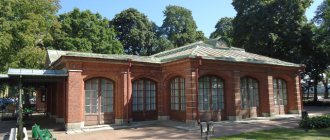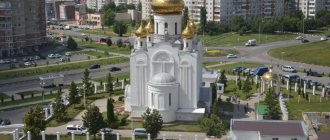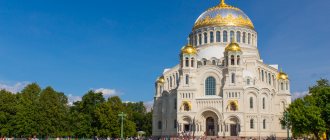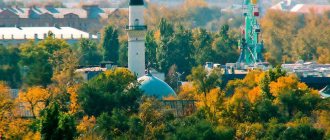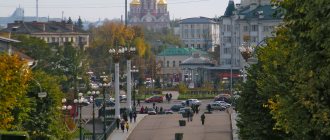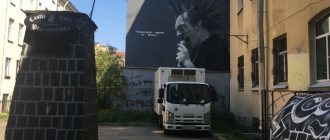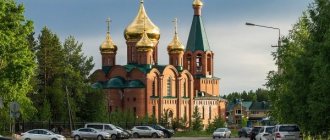The top 10 places to go in the Volgograd region for the weekend, compiled for ecotourists and fishing enthusiasts, as well as those who want to take a break from the bustle of the city and see the natural attractions of this amazing land of rivers, lakes and mountains. This time there will be a bright journey through the protected areas of Volgograd.
In the Volgograd region you can take a break from the bustle of the city.
Where is Volgograd
Volgograd is a large Russian city with a large number of interesting places, which is located in the southeastern part of the Russian Federation. As of 2022, approximately 1,013,533 people live here.
It is a regional center and bears the honorary title “Hero City”.
The city has bus, train stations and an airport. All major cities of the Russian Federation have transport links with Volgograd.
6 federal highways pass through the regional center, which ensures a quick and comfortable trip, both by your own car and by bus. The most convenient way to get to Volgograd is along the Moscow-Astrakhan highway.
Fishing
The Volgograd region is one of the regions of our country where you can enjoy high-quality fishing and are guaranteed to get a big catch.
Fishermen with spinning rods, donks and fillers can be found on almost all rivers and reservoirs.
The areas around Krasnoslobodsk, the villages of Pokrovka, Leshchev, Barbashi and Gromki are considered catching places on the Volga. Carp, pike, chub, perch and asp bite well here. They actively fish on the upper reach of the Tsimlyansk Reservoir, near Sarpinsky Island, on sand spits and river holes below the regional center and along the banks of the spacious Volgograd Reservoir.
Volzhskaya HPP
On Akhtuba, the villages of Tsarev and Solodovka are known among fishermen, and on Khopra, the outskirts of the village of Tishanka and the Buzuluk river. There are many crayfish in local reservoirs. True, their catching is allowed only in the fall.
On the Don River, within the borders of the region, they catch catfish, carp, bream, silver crucian carp, pike perch and silver bream, which locals call “zobany” and “kalinka”. The bite is especially active in the first half of summer.
Weather in Volgograd, best time to travel
The best time of year to travel to Volgograd is the end of May or any summer month. For tourists who prefer dry and warm weather, walking around the city will be most comfortable in mid or late spring. With the onset of summer, hot days with minimal precipitation set in in Volgograd. The table below provides information on weather conditions in the city.
| Season | Description of climatic conditions |
| Winter | Not very cold. Characterized by alternating frosts and thaws. The coldest month of the year is February, with average temperatures of -7 °C. |
| Spring | Frosty weather continues throughout March. The average temperature in the first month of spring is - 0.5 °C. In April, average daily temperatures rise to +9 degrees, and in May the air already warms up to +15. Spring weather in Volgograd is characterized by large temperature differences. During the day it can already be quite warm here, but at night frosts occur. |
| Summer | Dry and hot days set in from June until mid-September. On average, the air warms up to +°C. The greatest amount of precipitation falls in May and June (38-42 mm). |
| Autumn | By the end of September the air temperature drops to +15 degrees Celsius. In October it gets rapidly colder, the temperature drops to +8 °C, and the rains begin. In November, frosts are observed in the mornings. Cold weather also persists throughout the day. The average air temperature in November is +0.5 °C. |
The climate of Volgograd is temperate continental. On average, 347 mm of precipitation falls per season. Only 25% is snowfall. The rest of the precipitation consists of heavy rains accompanied by strong thunderstorms. The temperature maximum reached + 42.6 °C and fell in July.
Climate
The Volgograd region is located 1000 km southeast of Moscow. The Black and Azov Seas are nearby, and they have a huge impact on the local climate. The region is characterized by little snow and short winters. Due to the flat terrain, cold air from the continent easily penetrates into the Volgograd region, and the temperature drops to -10...-11°C.
Museum-reserve "Battle of Stalingrad" in Volgograd
Spring starts early. In March it is already warm, and primroses are blooming with might and main. Summer can be hot. In terms of abundance of sunshine, the region is in no way inferior to the famous resorts of Crimea
. When the winds bring hot air from the Kazakh steppes, the thermometer rises +39...+45°С.
Autumn is warm and lasts a long time. The first snow falls only in early December. There is not much rainfall during the year. In the Volga region it is only 270-300 mm, and in the north-west of the region - up to 400-500 mm.
Religious buildings of Volgograd
While in Volgograd, it is recommended to visit the following places of worship that will be of interest to tourists interested in the history of the city.
Kazan Cathedral
This is a temple dedicated to the icon of the Mother of God, which was built in 1899 during the time of Tsarist Russia. It is one of the oldest religious buildings in the city. Located in the Voroshilovsky district of the city on the street. Lipetskaya, 10. The cathedral was built in the pseudo-Russian style.
The structure has the shape of a cross, and the walls themselves are built of red brick. Inside the Kazan Cathedral there are old and rare icons. The doors of the temple are open to parishioners and city guests from 08-00 to 17-00 in the evening.
Ostrovsky Street
This is a street of the same name, the length of which is 130 m. It is located in the Central district of the city, where religious buildings in the city are located, namely: the Central department store.
During the Second World War, the most fierce battles took place here, and ultimately Field Marshal Paulus was captured within the walls of this building. Having walked 200 m further, city guests find themselves on Bazarnaya Square, which is a historical place in Volgograd.
Mamaev kurgan
A religious building located in the city center on the street. Marshal Chuikov. It is located on a mountain 102 m high, for which fierce battles were fought during the Second World War, since from this site the entire city, including the outskirts, was visible. The ascent to the top of the height passes along the Walk of Fame, through the Square of Sorrow and Fallen Heroes, and a military cemetery.
There is also a museum dedicated to military glory. A visit to the religious building is free and leaves an indelible impression on the minds of people who find themselves here for the first time.
Alexandrovsky graben
The Alexandrovsky graben is one of the unique geological places in the Volgograd region. A graben is a section of the earth's crust that has descended along tectonic faults in relation to its neighbors. Most often they are found in mountainous countries, so the size of the Alexander Graben is relatively small - only a few kilometers by a few meters in width, but the “depth” of its failure is about 200 m, and at its bottom there is a small beautiful lake.
The study of the Alexander Graben allows scientists to decipher the history of geographical events of these places - formations and relics of the Ice Age, silty lake sediments during the hot climate of the Neogene, evidence of the existence of a coastal marine zone here.
Museums of Volgograd
Interesting places in Volgograd are museum complexes that display exhibits dedicated to the long history of the city. It is recommended to visit the following municipal cultural institutions.
Memorial Historical Museum
Located next to Station Square on the street. Gogol, 10, 500 m from the existing railway station. This museum is considered a real pearl of the city.
Here you can see exhibition objects dating back to the beginning of the 20th century. Guests are presented with a large number of artifacts that were found during excavations on the territory of Volgograd or within the city limits. Open from Tuesday to Sunday from 10-00 to 18-00.
Volgograd Museum of Local Lore
Located at the address - prosp. Lenina, 7. A visit to this museum is recommended for tourists who are in Volgograd for the first time and are not yet familiar with the rich history of the city.
All exhibits tell visitors about the development of the settlement from its foundation to the present. The establishment is open from 08:00 to 17:00 from Monday to Friday.
Museum of J.V. Stalin
An interesting exhibition dedicated to the former leader of the USSR, a party leader, in whose honor Volgograd was previously named Stalingrad. All museum objects are connected with the life and work of J.V. Stalin. These are rare documents, clippings from newspapers, magazines, household items of the communist leader, books.
In a separate room of the museum, the office of J.V. Stalin was recreated. Here you can see the interior of that time, authentic furniture, as well as a wax figure of Joseph Vissarionovich, which is located near the desktop. The institution is open from 08-00 to 17-00 from Monday to Friday, and is located on the street. Rokosovsky, 102.
Park-Museum of Russian Fairy Tales named after A.S. Pushkin
In the village of Kirovets, Volgograd region, there is a unique and beautiful Museum of Russian Fairy Tales named after. A.S. Pushkin. The museum's exhibition includes many mannequins and decorations based on everyone's favorite fairy tales - Baba Yaga, Koschey the Immortal, Mermaid on the Oak Branches from Lukomorye, Nightingale the Robber, Emelya the Fool, Little Humpbacked Horse, Leshy, etc.
The museum was created on the initiative of a local married couple, the Pavlovs, and during the work they were joined by their neighbors who took part in leading excursions. Currently, the museum is in the process of expansion; it is planned to create the head of the knight from “Ruslan and Lyudmila”, a 10-meter whale and other exhibits.
Monuments in Volgograd
Interesting places in Volgograd are represented by a large number of monuments that have become real works of art, or are active reminders of the tragic pages of the city’s history.
The Motherland is calling
This is a huge sculpture of the image of a Russian woman who holds a raised sword in her hand and calls on her children, citizens of the country, to fight against the enemy. The height of the sculpture is 85 m. Construction of the monument took place from 1959 to 1967.
The monument is made of high quality reinforced concrete. The sculpture is dedicated to the events of the Battle of Stalingrad and glorifies the Soviet soldiers who fought against the aggressor. Visiting this cultural site is free, and the monument is located on Mamayev Kurgan.
Gerhardt's Mill
This is a dilapidated building that was damaged during World War II and was preserved in this form specifically to tell residents and guests of the city about the terrible consequences of hostilities. The monument is located on the street. Soviet.
The building was reconstructed to eliminate the threat of collapse. Today, this war monument can be visited completely free of charge at any time of the day. Before the outbreak of hostilities in the 40s, it was a steam mill that belonged to a Volga German, a merchant and trader named Alexander Gerhardt.
Museum panorama "Battle of Stalingrad"
A large memorial complex, including standard exhibition exhibits, as well as recreations of individual military actions using panoramas. It has the status of a historical reserve, which is visited annually by at least 2 million tourists coming from near and far abroad. All exhibition objects are dedicated to the Great Patriotic War and the Battle of Stalingrad itself.
The “Battle of Stalingrad” panorama will be an interesting place for lovers of the history of the Second World War in Volgograd
Here you can see everything from the equipment and weapons of a Red Army soldier to the living conditions of civilians surviving in the city during the period of hostilities. The memorial complex is located on the street. Marshala Chuikova, 47. Opening hours from 08-00 to 17-00 from Monday to Friday.
Souvenirs
What do tourists take away as souvenirs on a trip to the Volgograd region? Many travelers buy miniature copies of the famous monument on Mamayev Kurgan and things with military symbols.
They are sold in souvenir shops on the territory of the memorial and in city kiosks.
War Memorial Cemetery in Rossoshki
Women willingly take light and warm down scarves from skilled Uryupinsk craftswomen.
Practical and high-quality products keep you warm in the cold and look very beautiful.
The Volga city has the unofficial status of the Russian capital of mustard oil, and tourists are happy to buy bottles of oil from Sarepta mustard seeds. They are sold in any grocery store in Volgograd.
Cathedral of the Kazan Icon of the Mother of God in Volgograd
Those with a sweet tooth are sure to bring home chocolates, caramels and marshmallows from the Confip factory. Boxes with photographs of Volgograd sights are especially popular. As delicious souvenirs, tourists take home sweet and juicy Volgograd watermelons, delicate watermelon honey, as well as dried and smoked fish.
| ← RUSSIA | EUROPE → |
Architectural structures in Volgograd
Interesting places in Volgograd are located not only in that part of the city where sculptures and monuments dedicated to the Second World War are concentrated. Guests of the city will also find it informative to visit the following architectural monuments.
Tsaritsyn fire department
This is the first fire brigade building that was built on the territory of Volgograd. The building was put into operation in 1897. It is a picturesque architectural ensemble made in the eclectic style.
The building is divided into a barracks part, where the firefighters were on guard, and an observation bath, the height of which is 40 m (equal to 3 modern 4-story buildings). Today it is a monument of history and architecture, which you can see completely free of charge. Located on the street. Deep ravine.
Don't miss the most popular article in the section: Metro Nizhny Novgorod. Diagram, map, description.
Beit David
On the street Balakhinskaya, 2 is the largest synagogue in the Volga region. It was built by the Jewish community of Tsaritsyn (the old name of Volgograd) in 1888. At that time, at least 800 religious Jews lived in the city. During the Soviet era, the prayer house was closed under pressure from the central government.
The city clinic was located here, and since 2001 the building was returned to the Jewish community. The building was decorated by the famous Israeli architect and specialist in synagogue design, Aaron Ostreicher. Currently, it is a functioning synagogue, where services are held regularly. There is no fee to visit this architectural landmark.
House of Trade Unions
This is a cultural institution and architectural heritage site, which is located on Avenue. Lenin. It was built in 1957 to house trade unions of the city's industrial enterprises. The façade of the building is decorated with decorative stucco and majestic colonnades.
Externally, the building resembles a palace complex, and the overall architectural ensemble is atypical for the late Stalin era. Visiting the site is free. The institution is open from 08:00 to 17:00. Saturday and Sunday are days off. Because of its round shape, the indigenous residents of Volgograd call this building the “big toilet.”
Natural attractions of Volgograd
Volgograd is famous for its large number of monuments of the post-war era, ancient buildings, as well as natural attractions that are the decoration of the Volga region. The following sites are recommended for city guests to visit.
Volga-Akhtuba floodplain
A natural attraction that is famous for its picturesque landscapes. This is an amazing place where the Akhtuba River flows into the Volga. Every spring and summer, thousands of tourists, fishermen and wildlife lovers come here.
The waters of the Volga-Akhtuba floodplain are rich in commercial fish species, and nature is represented by relict plant species. To visit this amazing place you do not need to take a special permit or pay a fee.
Donskoy Park
It is a natural landmark of the Volga region, which consists of majestic chalk mountains, steppe zone and semi-desert. A visit to this place will be interesting for tourists who prefer active recreation, the beauty of nature and hiking over rough terrain.
The hills and hills are cut by deep canyons, within which their own unique ecosystem has formed. Visiting the national park is free, and the natural site itself originates outside the city limits.
Tsimlyansk Sands
This is a huge territory, completely covered with river sand, in the center of which is the Tsimlyansk reservoir. The reservoir is rich in such species of fish as crucian carp, carp, bream, carp, sabrefish, and perch. Nature here has been preserved in its original form.
On the territory of the Tsimlyansky Sands, hunting for hare, wild boar, fox and wolf is allowed. Tourists who are interested in fishing and game hunting can visit this natural attraction and admire not only its beauty, but also have a pleasant time hunting or the shores of the reservoir.
Salt Lake Elton
Lake Elton is one of the most interesting and beautiful natural places in the Volgograd region. This is the largest salt lake in Europe, covering an area of 152 km2 of the Volga steppe. The original beauty of the lake is in its color - the salt crystals covering its shores in a wide strip give the water bowl a golden-pink hue.
The coast of the lake is beautiful and varied - shallow waters covered with salt crystals, picturesque beaches and deltas of flowing rivers, green valleys and ravines. Several bitterly salty rivers and fresh springs flow into the lake, and the hot sun evaporates the water, leaving only brine. In addition to the usual brine, it also contains other types of bitter salts - Elton is the richest salt lake in the world. The thickness of its salt layers has not yet been determined precisely; it has only been established that the depth of their occurrence becomes thicker as they move away from the coast.
The healing properties of the salty and hydrogen sulfide mud of the beautiful Lake Elton have been used for decades to treat the musculoskeletal system and nervous system. The brine and silt mineral mud of this place is not inferior in its properties to the mud of the Dead Sea.
Modern objects in Volgograd, interesting to visit
Volgograd has a large number of modern objects and interesting places that are not related to the historical heritage of the city, but will also be interesting for tourists to visit.
Tkachevsky market
The largest market in the city, located on the street. Tkacheva, 14A. Open daily until 16-00. Here you can find any goods and items of public consumption. Prices on the market are on average 10-15% lower than in city supermarkets. This place is worth visiting not only to shop, but also to plunge into the special atmosphere of trade, which is typical only for the south-eastern regions of Russia.
Sweet Life
One of the most popular nightclubs in the city. Opens at 18-00 and works throughout the night until the last customer. Located at: Embankment 62-1 Armii, 6.
Here you can have fun with friends, drink cold beer, the average cost of which is 200 rubles. for 1 liter, try delicious cocktails and dance. Admission is free for both boys and girls.
Garden Bar
Entertainment establishment, which is located at: st. Lenina, 56A. This institution operates 24 hours a day. Here you can have a pleasant time, drink a cup of coffee, which costs 120 rubles, or enjoy a cocktail for 250 rubles. or have a delicious meal for 700-800 rubles.
Inside the establishment there is a cozy atmosphere with soft sofas and armchairs, a fireplace is burning, which creates a special atmosphere in the room. The staff is very attentive and responsive.
Interesting places to relax with children
When traveling around Volgograd with children, you can have a pleasant time with the whole family by visiting the following interesting places in the city.
Mobius strip maze
This is an entertainment complex that includes a labyrinth assembled from a large number of ribbons. They create the illusion of infinity and make it difficult to navigate the winding tunnels of the labyrinth.
Located near Mamayev Kurgan on the street. Zemlyachki, 110B. Recommended for visiting by children aged 5 to 12 years. The ticket price is 150 rubles.
Oceanarium
The Volgograd Oceanarium is a place of simultaneous discovery and entertainment. It will be interesting here for both children and their parents. Visitors to the aquarium have the opportunity to see crocodiles, penguins, sea turtles and other inhabitants of the deep waters. The entertainment center is located on the street. Zemlyachki, 110, B. The cost of the entrance ticket is 200 rubles.
Trampoline center Gravity
This is a complex of large and durable trampolines that allow children and parents to forget about gravity and soar in the air with minimal physical exertion. Located at: st. Kozlovskaya, 42. You will have to pay 300 rubles for visiting the Trampoline Center. per person.
Route for exploring Volgograd on your own for 1-2 days
When traveling around Volgograd on your own, staying here for 1-2 days, it is recommended to visit the following historical sites and natural attractions:
- monument to the Motherland Calling;
- Mamaev kurgan;
- Museum-panorama of the Battle of Stalingrad"
- reserve "Old Sarepta".
The best way to complete your acquaintance with the history of the city is to take a walk along the Central Embankment, where you can admire the beauty of the Volga, the red evening sunset, and plunge into the romantic atmosphere.
Hotels in Volgograd
While in Volgograd on a business trip or traveling around the city as a tourist, you can stay in the following hotels:
- Volgograd Hilton - price for accommodation here is 3,600 rubles. per day, the price includes breakfast, free internet, parking (located on Profsoyuznaya str., 13);
- Stalingrad - the hotel is located on the street. Rokosovsky, 102, cost of living here is 2450 rubles. per day, you can order breakfast, for which you will have to pay 380 rubles, there is free internet;
- Mini-hotel Sonberry is a budget option that will cost 1,500 rubles. per day, located on the street. Dymchenko, 8, rooms are equipped with all amenities, meals are not included in the price;
- The Sosnovy Bor estate is a cottage complex, accommodation in which costs 7,000 rubles. per day, the hotel is located on the street. Angarskaya, 137/181;
- Plaza – a hotel with comfortable rooms, which is located on the street. Novouzenskaya, 2/1, the price of living here is 1,700 rubles. per person.
While in Volgograd, you can choose a hotel for any budget, from economy class to expensive apartments or an individual cottage, such as the Sosnovy Bor Estate.
Unusual places
TSUM
The central department store stood on the main square and was a real monument of Soviet architecture. A successfully executed solution with a rounded corner façade, multi-level design and functional layout made the Volgograd TSUM one of the best department stores in the Union. Unfortunately, he found himself in the middle of the Battle of Stalingrad and suffered greatly. The German headquarters was located inside, where Paulus was later captured.
The department store was restored, but in a simplified form. And after the redevelopment of the area, it was tightly closed by a new hotel. Now the half-abandoned former Central Department Store can be found in the courtyard behind house No. 14 on Mira Street.
Floodplain of the Tsaritsa River
Surprisingly, the river after which Tsaritsyn was named no longer exists. The Astrakhan Bridge and the Metrotram bridge passed through it. In the 1960s, the lower part of the river was made underground, and all that remained of it in the city center was a wide floodplain. Now it is a green area with its own ecosystem. The main informal attraction, the Moryatnik, is also located there.
Seafarer
There is an unusual structure in the floodplain of the Tsaritsa River. This is a children's pool, unfinished during the Soviet years, which until recently was a place of attraction for informals and criminal elements. The building was considered mystical and even cultic; gatherings, rituals, and concerts were often held inside. At least two murders are known to have been committed within the walls of the building. However, now everything is calm here: the abandoned swimming pool remains open, but is no longer as popular as it once was. Still, you should be careful when visiting the seafarer and do not go there alone.
Planetarium
The architecture of the Volgograd planetarium may seem atypical for Soviet times, and this is no coincidence. The project, construction materials, equipment and all technical equipment were donated to the city on behalf of the GDR. Inside there is a telescope, a zoom lens, an astronomical platform and other instruments for studying the starry sky. At the time of its founding, these were advanced technologies and the best materials.
Market
The central market between Lenin Avenue and Sovetskaya Street was built in the 19th century and reconstructed several years ago. Now its territory is home to several trendy bars and cafes, and in the evening it is quite lively.
Volgodonskaya street
Volgodonskaya Street is hidden in the depths of the block on Mira Street and reminds of the almost disappeared Tsaritsyn layout. Without knowing the history, you may not understand why the buildings face the courtyard. Once upon a time the street was called Anastiyskaya and overlooked the Preobrazhensky Forstadt of the Tsaritsyn Fortress. Among the surviving houses are the mansion of the merchant Alekseev and the Mishnin mansion.
Synagogue
A pre-revolutionary synagogue has been preserved on Port Said Street. It stands out noticeably from the surrounding buildings with its rich decor and non-trivial window design. In 1929, the synagogue was closed, and now there is a medical center inside.
Architect's house
The architect's Tsaritsyn house has been preserved in the courtyard of the house on Krasnoznamenskaya Street. Its façade once faced the street, which disappeared after redevelopment, and is now hidden inside the block. First of all, the architecture of artistic brickwork with patterns, runners and columns, as well as the cast-iron balcony railing and interiors are unique.
Cossack Theater
The Cossack Theater on Raboche-Krestyanskaya Street occupies one of the rare pre-revolutionary buildings in the area. It was built for the Tsaritsyn merchant-philanthropist. The unusual decor, according to legend, immortalizes the memory of his daughter, who tragically drowned: the façade features many nautical-themed elements, including shells, Poseidon, cupids, dragons and angels.
In the 19th century there was a women's gymnasium here, and now the Cossack Theater. After reconstruction, the building lost its corner tower, but remains an interesting architectural monument.
Old tram
On Kommunisticheskaya Street near the Komsomolsky Garden there is a monument to the tram. This model was used in Volgograd from 1929 to 1967.
Where to eat in Volgograd
There are many cozy cafes and restaurants in Volgograd, where the food is tasty, satisfying and at a low cost.
The following establishments are recommended for visiting:
- Voronka coffee shop – located on the street. Komsomolskaya, 10, there is exclusively European cuisine, suitable for vegetarians, the average bill is 300 rubles;
- the restaurant Shchastye Is - an establishment of French cuisine with an average cost of dishes from 250 to 800 rubles, located at the address: Alleya Heroev, 2;
- Restaurant Gifts of Armenia is an establishment of Caucasian cuisine, which is located on the street. Parkhomenko, 15a, the average cost of lunch here is 500-600 rubles;
- Chocolaterie Brownie Store - a pastry cafe that sells sweets made with chocolate and also brews delicious coffee, average prices are 700-900 rubles, located on the street. Chuikova, 21;
- cafe Marusya – located at the address: Alley of Heroes, 2, here visitors can try European and Russian cuisine, many fish dishes, the average bill is 700-1000 rubles.
Most city guests who dined in Volgograd restaurants and cafes noted that the most delicious dishes are those made from fish. The leader of consumer preferences is fish soup, as well as sterlet with cheese.
How to get around Volgograd
You can move around the city using the following types of public transport, which start running from 06:00 a.m. to 11:00 p.m.:
- trolleybus (cost 15 rubles);
- high-speed tram, 6 stations of which are underground (ticket price 12 rubles);
- buses (fare costs 25 rubles).
Visiting interesting places in Volgograd can be organized using a taxi, the average cost of which is from 300 to 700 rubles. depending on the distance of the trip.
Volgograd is a city with a rich and dramatic history, having studied which it is impossible to remain indifferent. Most people who have visited here as tourists fondly remember the city, the responsiveness of its inhabitants and the beauty of the Volga region.
Article design: Mila Friedan

